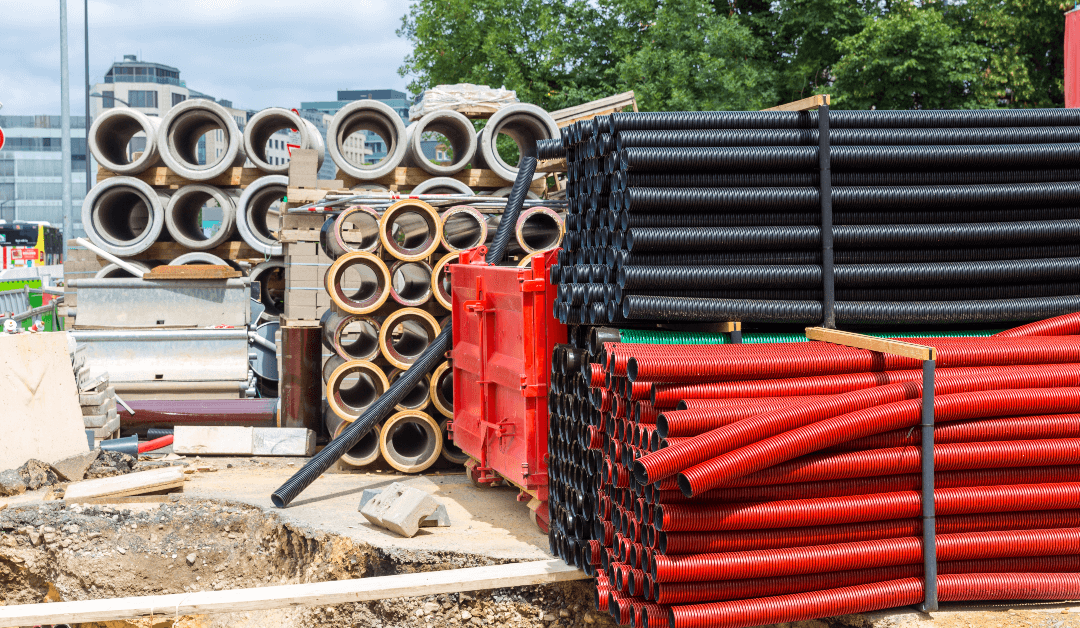As natural disasters such as hurricanes and other big storms become more common, many homeowners and builders are opting for weather-resistant building materials when constructing or remodeling their homes.
Why weather-resistant material? Hail, wind, rain, and snow do not cause as much damage to weather-resistant building materials as they would to non-weather-resistant building materials.
Weather-Resistant Vs. Waterproof
You must have come across these two terms and in case you’re wondering the difference between the two here it is:
Weather-Resistant Building Materials refer to materials that can resist water penetration to some extent but not completely.
Waterproof technically refers to the fact that it is resistant to water no matter how long it is submerged in water.
An example of a weather-resistant material is weather-resistant plastics.
Weather Resistant Plastic
Weather-resistant plastics are extremely durable and are ideal for a wide range of exterior uses. Over the last century, these plastics have become widely used. Here are several examples of weather-resistant plastics that you can use.
PDCPD
PDCPD is a thermoset weather-resistant plastic with superior material properties that is high-performance and weather-resistant.
Because of its high heat, corrosion, and impact resistance, it is suitable for various applications in a variety of environmental conditions, including harsh environments.
Phenolic Resins
Having been introduced in 1907 under the trade name Bakelite, Phenolic resins are another prominent weather-resistant thermoset plastic. Phenolic, often known as phenolic resins, are one of the most versatile and earliest polymers.
Polycarbonate
Another weather-resistant plastic with good performance is polycarbonate. Thermoplastic polymers are used to construct it. Polycarbonate is a strong and durable material that can bear a lot of pressure and impact.
What Weather-Resistant Materials Can You Use In 2022?
If you want your home to last through whatever Mother Nature throws at it, then here are weather-resistant building materials that you can use in 2022.
Hail-Resistant Roofing
If you live in a region where hailstorms occur frequently, such as Colorado, you are aware of the devastation hail may cause. Even small hailstones can wreak havoc on your outdoor materials such as the roof hastening its deterioration.
Moisture Resistant Insulation
Insulation is a requirement in practically every home. Insulation not only keeps unpleasant temperatures out but also keeps the air inside the house confined.
Companies do, however, make moisture-resistant insulation for places that experience occasional storms and hot weather.
Impact-Resistant Windows
During a strong storm, glass windows and doors are typically a subject of anxiety. Glasses can not only shatter, causing harm, but they can also expose the house to harmful elements.
Elements such as the rain or snow could enter, as well as burglars, who may consider the opening as an opportunity. Impact-resistant windows come in handy helping your house become weather resistant.
Fluid-Applied Flashing
If you live in a storm-prone area, you know how important it is to seal your windows and other small home access points to minimize floods. However, you are probably aware that no matter how hard you try to avoid it, accidents and destruction will occur.
Fluid-applied flashing could be an answer to some of these problems. It’s a weather-resistant building material that helps keep you safe.
Concrete Framing
Many houses are stick-built, which means that the frame is made of wood, regardless of the siding. Stick-built and wood-framed homes are great for normal weather and conditions, but they may not be enough if you reside in a location with more extreme weather.
Concrete framing is weather-resistant and has your back during extreme weather.
Why Go For Concrete Framing?
Because concrete framing is tougher and better able to survive natural calamities, poured concrete and ICF construction are becoming increasingly common as framing materials. Both materials are far more stable than wood and are less susceptible to environmental factors.
They can also withstand higher wind speeds and impact. They can be clad in a variety of various materials, allowing you to get the design and style you desire for your home while also providing enhanced weather protection.
Some forms of this weather-resistant building material are reinforced concrete frames and ICF blocks. They aid in the construction of earthquake-resistant dwellings. These sorts of frames are far sturdier ensuring that your home or building will withstand any force.
Fibre Cement Siding
It was one of the weather-resistant materials chosen for the home’s façade, along with a concrete frame and impact-resistant windows that weathered Hurricane Michael.
Advantages Of Using Fibre Cement Siding
The siding or cladding is the home or building’s first line of defense against elements, regardless of the material used to construct the frame. Fibre cement siding is not only impact-resistant but also moisture and flame-resistant.
Fibre cement siding, unlike wood siding, does not swell or warp when exposed to moisture and does not lose its paint or color when exposed to hail and high winds. The color will not fade or chip and the material will not be damaged by collision or wind.
Fibre cement siding is also available in a variety of forms, such as lap siding, shingles, and architectural panels. This implies that regardless of the type of home or your particular preferences for its appearance, you can aid in weather protection for its outside material.
Garage Floor Waterproofing
Because most floods happen in the basement, many people concentrate their anti-flooding strategies there. The garage, however, comes in a close second to the basement and is often overlooked.
Your garage contains some of your most valuable items, so while protecting other sections of your home is crucial, your garage should be a top priority. It may not be as tough as you think to properly storm-proof your garage.
The waterproofing of the concrete garage floor is the first and most important stage. With this, your garage becomes weather resistant.
Building Envelope Sealant
When it comes to house improvement, the phrase “envelope” refers to the barrier that separates the interior from the outdoor material. To put it another way, how well does your house retain the gas or air conditioning you pay for inside?
Building an envelope sealant helps you retain gas or air inside your house.

